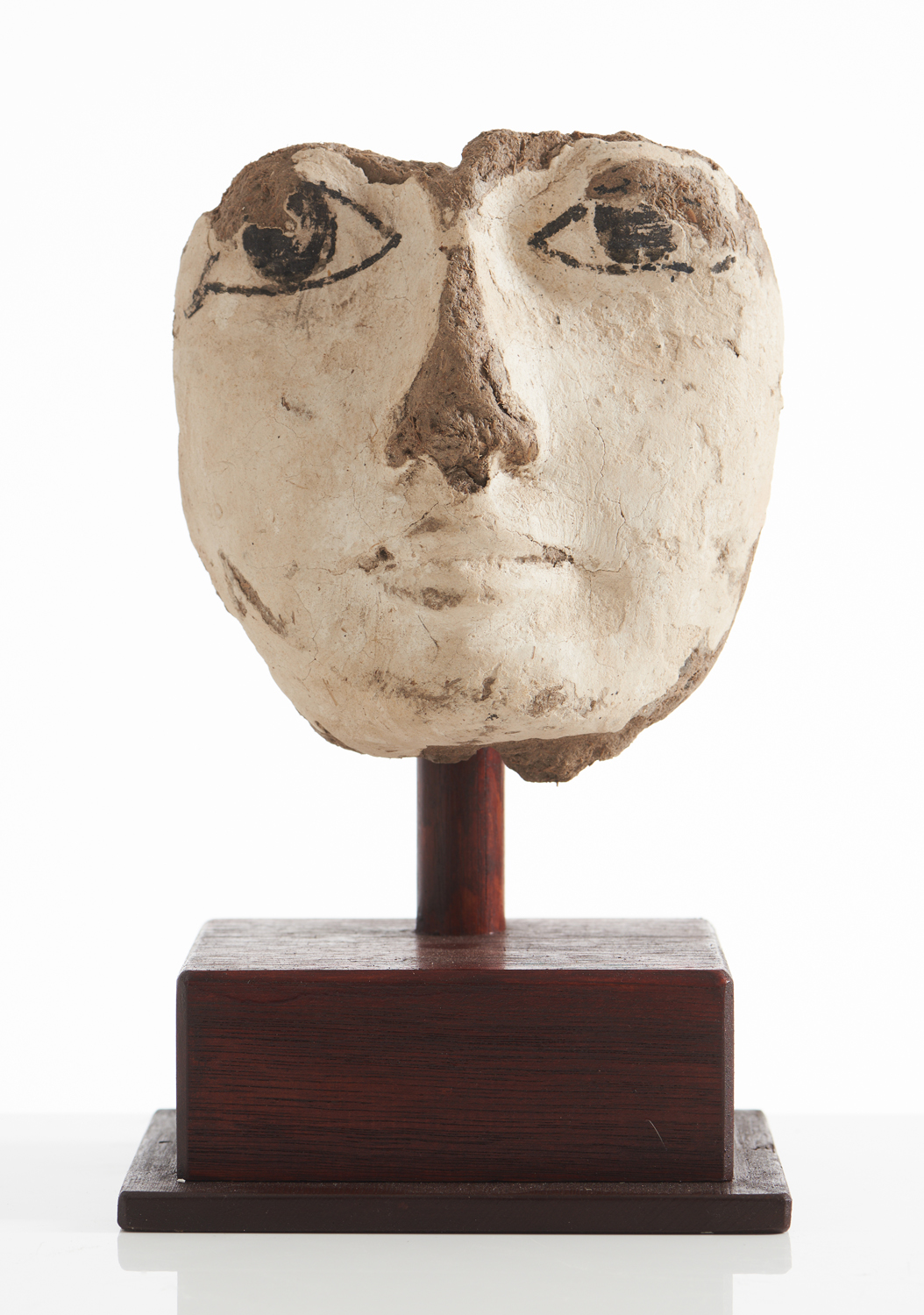As we know from centuries of archaeological findings, Ancient Egyptian funerary rituals were extensive and well planned. Well preserved mummies have given us a clear vision of Egyptian civilization 3000 years ago.

Mummy masks and coffins were traditionally made from wood or cartonnage (paint, plaster, linen). The rare example within our upcoming auction is crafted from mud and straw, which would have been combined and dried as the mould, then the mask would have been modelled to depict its owner and incorporated into the coffin. Originally reserved only for royalty, mummification later became popular for wealthy and elite members of Egyptian society, whom this example would likely have been made for.
In addition to replicating the appearance of their owner, these masks provided both physical and magical protection. Egyptian funerary customs were quite elaborate, and a requirement of these ceremonies was to preserve the physical body in the most life-like manner possible, achieved through a laborious 70-day mummification process and encasement of the body in a coffin, and then later, a tomb. The belief was that the physical body was the soul’s vessel, so if protected, the soul could successfully pass into the afterlife and be reborn.
It is a real treat to handle a piece of this age and condition, and we look forward to offering this mask on December 10 within our Decorative Arts and Asian Works of Art Including Antiquities auction.
Chiara Curcio, Head of Decorative Arts
December 2020
